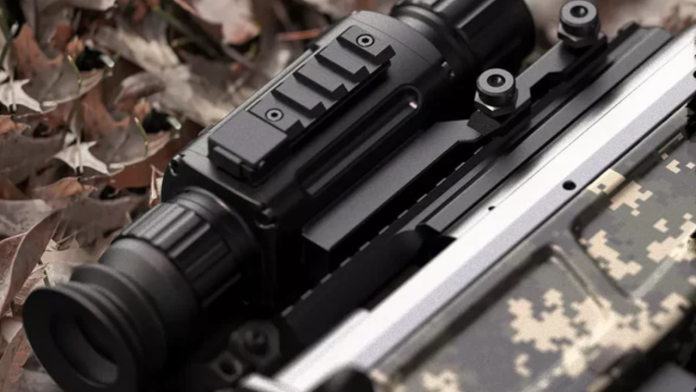Thermal scopes work by detecting heat signatures rather than observing light. Thermal scopes support outdoor sports, including hunting, while also serving tactical teams and security personnel. Traditional optical systems need visible light to work, but they cannot see targets in dark environments. Thermal scopes detect targets based on infrared radiation production while working in total darkness. Discover how this technology lets you view beyond the natural visual range.
The Science Behind Thermal Imaging: How It Works
Thermal imaging equipment senses infrared energy released by everything around it. The naked human eye cannot see thermal radiation, but thermal scopes contain sensors that detect these invisible patterns. Infrared sensors without cooling systems remain the standard choice due to their sturdiness and quick reaction times. The sensor measures heat variance and produces a visual overview of temperature variations. Thermal cameras detect body heat from living things that show brighter when seen against cold surrounding areas.
Traditional optics need light to work, but thermal scopes operate perfectly in complete darkness. Advanced image processing makes captured thermal readings easier to understand. This advanced technology detects all heat-emitting objects and living beings without needing light to operate. You can learn more here about thermal scopes worth.
Thermal Scopes Have Unique Features That Let You See Heat, Not Light
Conventional scopes work by processing visible light either directly or through amplification. Regular optics suffer from poor performance when used in poorly lit spots or under dense cover. Thermal scopes provide better detection by recognizing heat spot patterns. The thermal scopes even find targets that use camouflage for cover or hide in rugged terrain.
Thermal imaging technology identifies camouflaged objects because it senses their heat transmission. Thermal scopes use heat signatures to detect animals inside thick vegetation because the animals emanate heat. Security workers depend on thermal scope technology to spot people who try to stay hidden. Thermal scopes become necessary tools when regular optics cannot work in the field.
Spotting Targets in Total Darkness: A Game-Changer for Hunters and Outdoor Enthusiasts
Thermal scopes create powerful viewing prowess in complete darkness. These devices detect targets without needing external light because they work independently in darkness. The thermal scope helps hunters locate heat-emitting animals, including hogs, coyotes and deer.
People who explore nature for camping and wildlife observation experience clear gains from these tools. You can detect potential threats by using thermal scope tools to see wild animals and unwanted outsiders. This technology lets people see clearly during complete darkness, which makes outdoor activities safer and more effective.
Penetrating Smoke, Fog, and Foliage: The Unmatched Visibility of Thermal Imaging
Thermal scopes perform best in smoke-filled or foggy conditions, plus dense plant cover. Infrared radiation goes straight through visual barriers so thermal scopes can spot heat emissions that stay hidden from human eyes. Thermal scopes help teams locate people more efficiently in heavy foliage and poor visibility during rescue missions, security assignments, and hunting trips.
During search-and-rescue missions, thermal scopes detect human body heat beneath thick plant cover and dense fog. Security professionals use these scopes to spot hidden movements in places obscured by smoke. Thermal imaging outperforms night vision since it produces clear images regardless of lighting conditions.
The Practical Applications of Thermal Scopes in Outdoor Sports and Security
Thermal scopes support many different activities in different work areas. These scopes help hunters and wildlife observers find wounded animals through their tracks. These tools help scientists study animals during the night without changing their typical behavior.
During tactical missions and police operations, thermal scopes let operators see in dark environments. Officer teams can spot danger and move through dark spaces and secured zones without needing external light. The technology enhances military and police forces’ ability to detect their surroundings for better tactical planning.
Search-and-rescue squads track survivors with thermal scopes through hard-to-reach or disaster-hit regions. Thermal scopes help search and rescue teams find people in challenging environments since they can spot body heat.
Conclusion
Thermal scopes provide an advanced method of detecting hidden targets through heat signatures. This technology goes beyond basic optics to see clearly both in dark areas and through solid objects. Hunters and security personnel benefit most from thermal scopes because they provide precise detection with exceptional result delivery.
Low-visibility operations depend on thermal scopes to detect targets effectively. Whether for tracking games, ensuring public safety, or enhancing property security, thermal scopes are indispensable tools. Embracing this technology allows for enhanced perception beyond the visible spectrum, ensuring improved outcomes across various fields.












